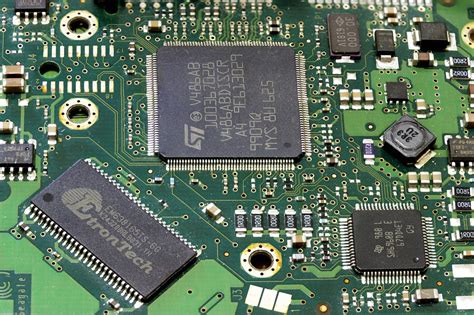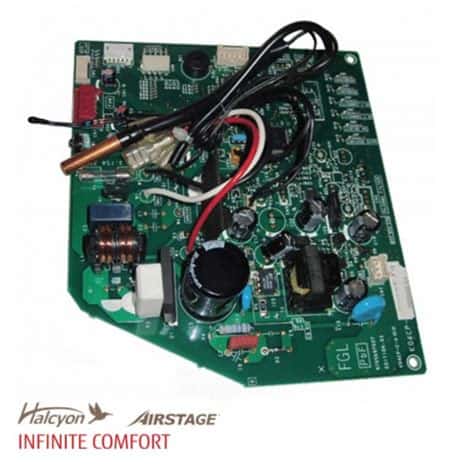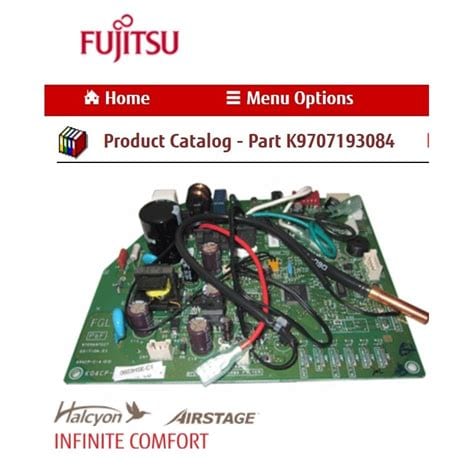Introduction to ASU PCBs
Advanced Substrate Utilization (ASU) Printed Circuit Boards (PCBs) represent a cutting-edge technology in the electronics manufacturing industry. ASU PCBs are designed to maximize the utilization of the substrate material, resulting in more efficient use of space and reduced waste. This technology is particularly relevant in China, where the electronics industry is rapidly growing and there is a high demand for advanced PCB solutions.
What are ASU PCBs?
ASU PCBs are a type of printed circuit board that uses advanced substrate utilization techniques to maximize the use of the available space on the board. This is achieved through a combination of design optimization, material selection, and manufacturing processes. ASU PCBs typically feature:
- High-density interconnects (HDI)
- Embedded components
- Blind and buried vias
- Fine-pitch traces and spacing
These features allow for more complex circuits to be built on smaller boards, reducing the overall size and weight of electronic devices.
Benefits of ASU PCBs
The benefits of using ASU PCBs include:
-
Reduced size and weight: ASU PCBs allow for more compact and lightweight electronic devices, which is particularly important in applications such as mobile devices, wearables, and aerospace.
-
Improved performance: The high-density interconnects and embedded components in ASU PCBs enable faster signal transmission and reduced signal loss, resulting in improved overall performance.
-
Cost savings: By maximizing the use of the substrate material, ASU PCBs can reduce waste and lower production costs.
-
Enhanced reliability: The advanced manufacturing processes used in ASU PCBs, such as blind and buried vias, contribute to increased reliability and durability.
ASU PCB Copy Board Technology in China
In China, the demand for ASU PCBs has led to the development of specialized copy board technology. Copy boards are used in the PCB manufacturing process to transfer the circuit pattern from the design file to the physical board. ASU PCB copy boards are designed to handle the complex features and high-density interconnects found in ASU PCBs.
Types of ASU PCB Copy Boards
There are several types of ASU PCB copy boards used in China, each with its own advantages and applications:
- Laser Direct Imaging (LDI) Copy Boards:
- Uses a high-precision laser to directly expose the circuit pattern onto the photoresist-coated substrate
- Offers high resolution and accuracy, suitable for fine-pitch traces and high-density designs
-
Eliminates the need for photomasks, reducing costs and turnaround time
-
Inkjet Printing Copy Boards:
- Uses inkjet technology to directly print the circuit pattern onto the substrate
- Allows for Rapid prototyping and low-volume production
-
Enables the use of a wide range of substrate materials, including flexible substrates
-
Nano-Imprint Lithography (NIL) Copy Boards:
- Uses a nanoscale mold to transfer the circuit pattern onto the substrate
- Offers high resolution and accuracy, suitable for ultra-fine pitch traces and high-density designs
- Enables the fabrication of three-dimensional structures, such as embedded components
Comparison of ASU PCB Copy Board Technologies
| Technology | Resolution | Accuracy | Throughput | Cost | Flexibility |
|---|---|---|---|---|---|
| LDI | High | High | Medium | High | Medium |
| Inkjet | Medium | Medium | High | Low | High |
| NIL | Ultra-high | High | Low | High | Low |
The choice of ASU PCB copy board technology depends on various factors, such as the required resolution, accuracy, production volume, and budget. LDI copy boards are widely used for high-volume production of complex ASU PCBs, while inkjet printing is preferred for rapid prototyping and low-volume runs. NIL copy boards are still an emerging technology but offer the potential for ultra-high resolution and 3D structures.

Set of Technologies for ASU PCBs in China
In addition to copy board technology, there are several other key technologies used in the manufacturing of ASU PCBs in China. These technologies work together to enable the fabrication of high-quality, high-density PCBs with advanced features.
High-Density Interconnect (HDI) Technology
HDI technology is a critical component of ASU PCBs, enabling the creation of high-density interconnects between layers. HDI PCBs feature:
- Microvias: Small-diameter vias that connect adjacent layers, allowing for higher-density interconnects
- Blind and buried vias: Vias that do not extend through the entire thickness of the board, enabling more efficient use of space
- Fine-pitch traces: Narrow traces and spacing, allowing for more complex circuits in a smaller area
HDI technology is essential for achieving the compact size, high performance, and reliability of ASU PCBs.
Embedded Component Technology
Embedded component technology involves the integration of passive components, such as resistors and capacitors, directly into the PCB Substrate. This technology offers several advantages:
- Reduced board size: Embedding components frees up space on the surface of the board, allowing for more compact designs
- Improved performance: Embedded components are closer to the active components, reducing signal path length and improving Signal integrity
- Enhanced reliability: Embedded components are protected from environmental factors and mechanical stress, increasing the overall reliability of the PCB
Embedded component technology is a key enabler for the miniaturization and performance enhancement of ASU PCBs.
Advanced Materials and Surface Finishes
The choice of materials and surface finishes plays a crucial role in the performance and reliability of ASU PCBs. Some of the advanced materials and surface finishes used in China include:
-
Low-loss dielectrics: Materials with low dielectric constant and loss tangent, such as polytetrafluoroethylene (PTFE) and hydrocarbon ceramic (HCC), are used to reduce signal loss and improve high-frequency performance.
-
High-temperature substrates: Substrates with high glass transition temperatures, such as polyimide (PI) and bismaleimide triazine (BT), are used for applications that require high thermal stability.
-
Immersion silver (ImAg) surface finish: ImAg is a popular surface finish for ASU PCBs due to its excellent solderability, low cost, and compatibility with fine-pitch components.
-
Electroless nickel immersion gold (ENIG) surface finish: ENIG offers good corrosion resistance, durability, and compatibility with a wide range of soldering processes, making it suitable for high-reliability applications.
The selection of materials and surface finishes depends on the specific requirements of the application, such as operating temperature, frequency, and environmental conditions.

Challenges and Future Trends
While ASU PCBs offer numerous benefits, there are also challenges associated with their manufacturing and adoption. Some of these challenges include:
-
Higher manufacturing costs: The advanced technologies and materials used in ASU PCBs can result in higher manufacturing costs compared to traditional PCBs.
-
Design complexity: Designing ASU PCBs requires specialized skills and tools to handle the high-density interconnects, embedded components, and advanced features.
-
Supply chain management: The complex supply chain for ASU PCBs, involving multiple suppliers for materials, components, and manufacturing services, can pose challenges in terms of quality control and lead times.
Despite these challenges, the future of ASU PCBs in China looks promising. The increasing demand for compact, high-performance electronic devices is driving the adoption of ASU PCB technology. Some of the future trends in ASU PCBs include:
-
5G and IoT applications: The rollout of 5G networks and the growth of the Internet of Things (IoT) are expected to drive the demand for ASU PCBs in applications such as smartphones, wearables, and smart home devices.
-
Advanced packaging technologies: The integration of ASU PCBs with advanced packaging technologies, such as system-in-package (SiP) and fan-out wafer-level packaging (FOWLP), will enable even greater miniaturization and performance improvements.
-
Sustainable manufacturing: There is a growing focus on sustainable manufacturing practices in the PCB industry, including the use of eco-friendly materials and processes. ASU PCBs, with their ability to reduce waste and improve resource utilization, are well-positioned to contribute to sustainable electronics manufacturing.

Frequently Asked Questions (FAQ)
-
What is the difference between ASU PCBs and traditional PCBs?
ASU PCBs use advanced substrate utilization techniques, such as high-density interconnects and embedded components, to maximize the use of space on the board. Traditional PCBs have a simpler structure and lower component density. -
Are ASU PCBs more expensive than traditional PCBs?
Yes, ASU PCBs are generally more expensive than traditional PCBs due to the advanced technologies, materials, and manufacturing processes involved. However, the benefits of ASU PCBs, such as reduced size, improved performance, and enhanced reliability, can justify the higher cost in many applications. -
What are the main applications of ASU PCBs in China?
ASU PCBs are widely used in consumer electronics, telecommunications, automotive, aerospace, and medical devices in China. They are particularly relevant for applications that require compact, high-performance, and reliable electronic systems. -
How do I choose the right ASU PCB copy board technology for my project?
The choice of ASU PCB copy board technology depends on factors such as the required resolution, accuracy, production volume, and budget. LDI copy boards are suitable for high-volume production of complex designs, while inkjet printing is preferred for rapid prototyping and low-volume runs. NIL copy boards offer ultra-high resolution but are more expensive and less flexible. -
What are the future trends in ASU PCB technology in China?
The future trends in ASU PCB technology in China include the increasing adoption in 5G and IoT applications, the integration with advanced packaging technologies, and the focus on sustainable manufacturing practices. These trends are expected to drive the growth and innovation in the ASU PCB industry in the coming years.
Conclusion
ASU PCBs represent a significant advancement in PCB technology, offering numerous benefits such as reduced size, improved performance, and enhanced reliability. In China, the demand for ASU PCBs has led to the development of specialized copy board technologies and a set of supporting technologies, including HDI, embedded components, and advanced materials and surface finishes.
While there are challenges associated with the manufacturing and adoption of ASU PCBs, the future outlook for this technology in China is positive. The increasing demand for compact, high-performance electronic devices, driven by trends such as 5G and IoT, is expected to fuel the growth of the ASU PCB industry.
As the electronics industry continues to evolve, ASU PCBs will play a crucial role in enabling the next generation of electronic devices and systems. With its strong manufacturing capabilities and focus on innovation, China is well-positioned to be a leader in the development and application of ASU PCB technology in the years to come.

No responses yet